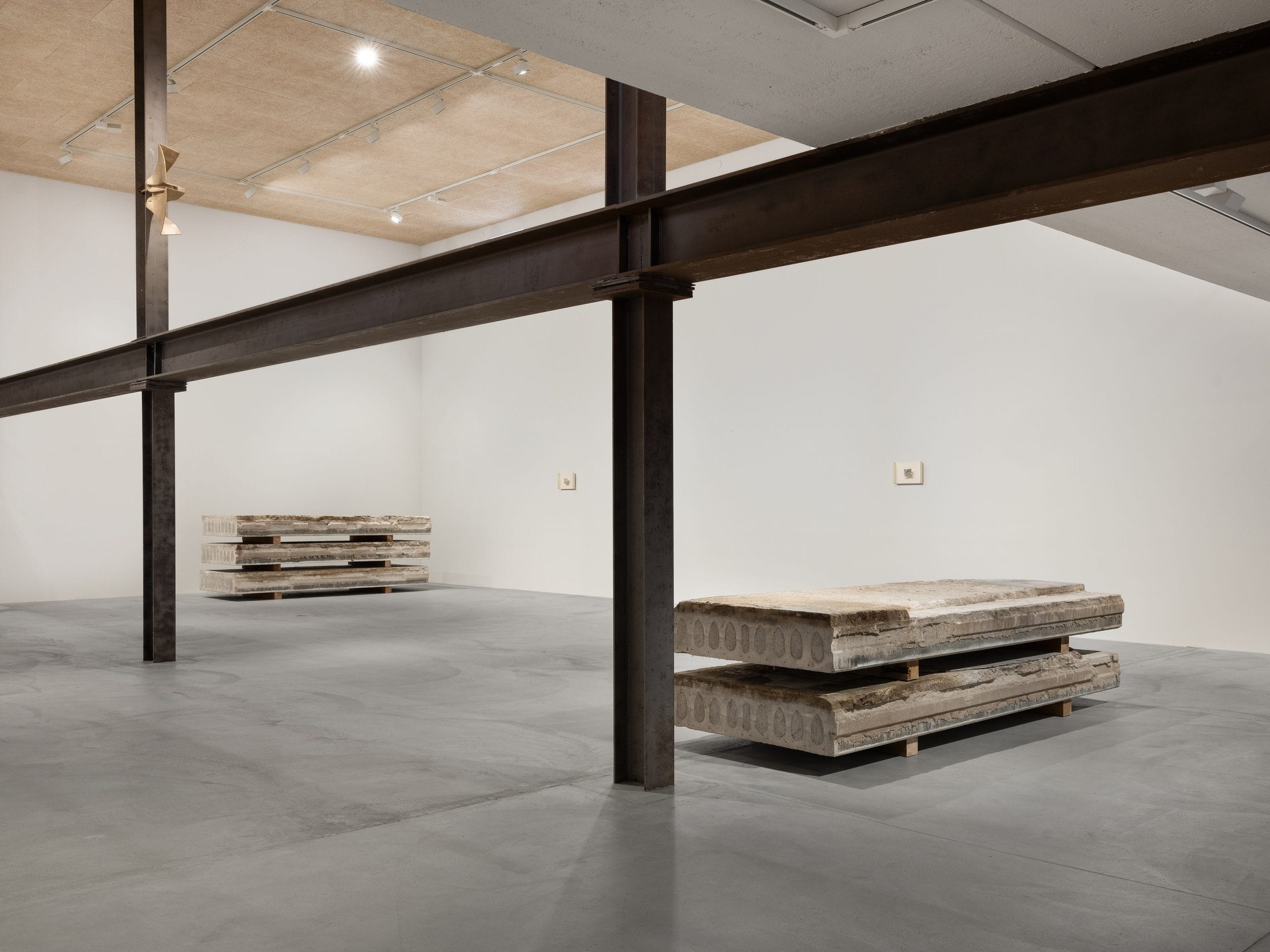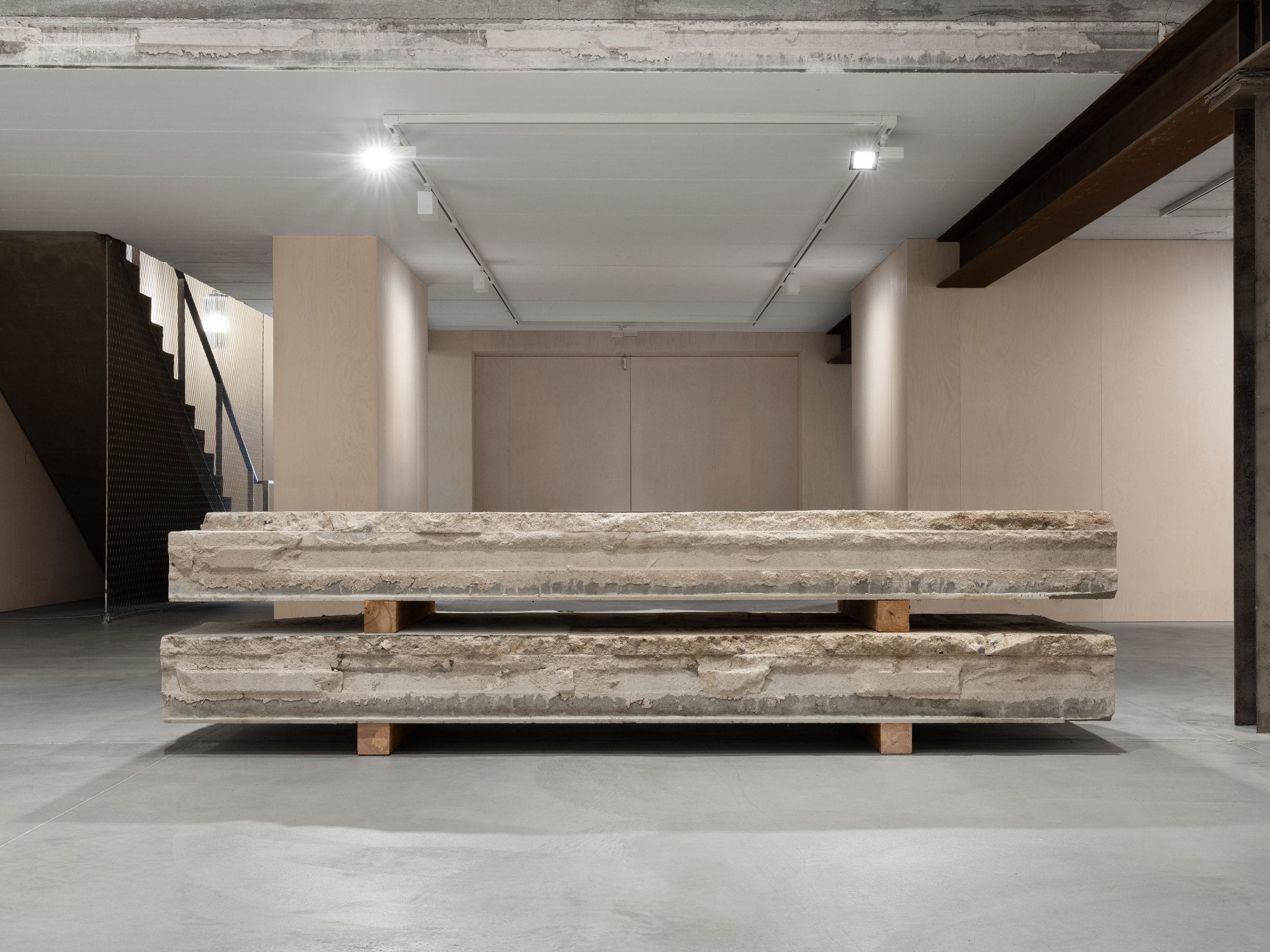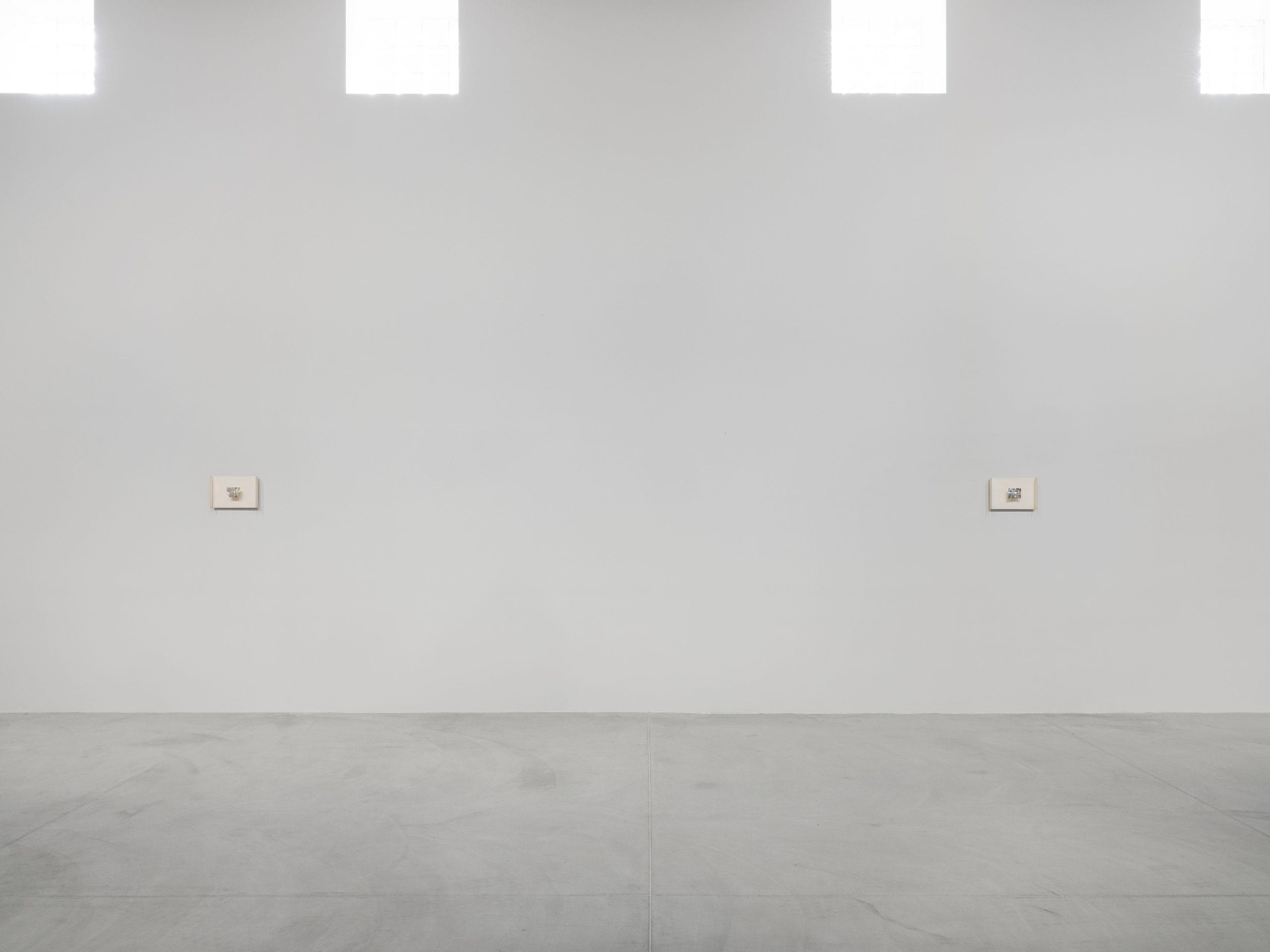
K.R.M. Mooney, reserves at Midway Contemporary Art, Minneapolis
Upon entering K.R.M. Mooney’s reserves exhibition, the viewer is immediately enveloped in an atmosphere of understated intensity. The gallery’s industrial minimalism, characterized by its raw concrete, exposed beams, and subtle lighting, echoes the materiality of the works themselves, setting the tone for an exhibition that engages with the dynamics of circulation, accumulation, and material transformation.
In the photos, the careful arrangement of each piece underscores the deliberate interaction between architecture and material. The works are positioned to emphasize the relationship between structure and surface, blending seamlessly with the industrial, almost raw environment of the gallery. The sparse layout creates an atmosphere of calm, yet the presence of each object feels undeniably potent, as if the space itself has become a part of the installation.
At the heart of this exhibition is Untitled (2018), a collaboration between Mooney and McIntyre Parker. Situated near the gallery’s utility room, the installation comprises a projector resting on a generator, looping a brief 27-second film. The film, with its fading images of mundane domestic objects obscured by light, has a transient, almost ghostly quality. Yet, the physicality of the projector and generator anchors the piece, reminding us of the machinery that sustains the fleeting images. The interplay between the ephemeral visuals and the solidity of the equipment offers a stark commentary on energy, both stored and spent, and the continuous cycle of transformation.

Beyond this, Mooney’s exploration of material processes becomes evident in the way the works interact with the space itself. The large concrete slabs, remnants of the building’s past life, are stacked with a quiet authority, highlighting their history while suggesting future possibilities. These materials, usually relegated to the background as mere architectural components, are brought to the foreground, now integral to the aesthetic and conceptual framework of the exhibition. Their rough surfaces and solid forms stand in stark contrast to the fluid, almost invisible forces at play in the projection piece, reinforcing Mooney’s fascination with the tension between the seen and unseen, the permanent and the transient.

In this exhibition, the viewer is invited to move through space, noticing the subtle material shifts, from the cold hardness of concrete to the soft flicker of light. Each element, from the piled concrete panels to the scattered cylindrical objects on the floor, speaks to a delicate balance between accumulation and dispersal, construction and decay. The industrial and the organic coexist, and in doing so, they ask us to reconsider the relationships between object, space, and viewer.
In a striking gesture, the remnants of the building itself play a crucial role in the exhibition. Stacked concrete slabs from the building’s former second floor are repurposed as sculptures, reinforcing Mooney’s theme of accumulation and distribution. These slabs are not just historical traces; they serve as raw materials for future construction phases, blurring the line between artwork and architectural infrastructure. The title reserves speaks to this process, materials in waiting, capable of becoming something new.

The exhibition’s sense of movement and flux extends to Gain C. (Ampere) ii, a bronze form threaded through the gallery’s steel framework. Here, Mooney reimagines sound as substance, with the bronze construction recalling an amplifier’s sectoral horn. The form’s position within the building’s structural “spine” reinforces the idea of unseen forces, whether sound waves or material transformations, that shape the environment around us.
Throughout the space, seemingly minor details, such as the clusters of cylindrical iron-embedded fat and wax in 12:0, 14:0, 16:0, 16:0, 17:0, 18:0, 18:2, 18:3, 20:1, hold deeper significance. These objects, designed to polish metals, quietly reference the industrial processes that underlie both artistic creation and everyday material life. Scattered on the floor, they bring the viewer’s attention downward, reminding us of the oft-overlooked ground beneath our feet, just as the concrete slabs draw attention to the gallery’s foundations.

In reserves, Mooney subtly subverts the typical roles of infrastructure and materiality in art. The artist embraces imperfections, invites oxidation, and foregrounds the materials that usually remain hidden or ignored. As a whole, the exhibition feels like a meditation on the passage of time, the endurance of materials, and the invisible forces that bind them together. By emphasizing the structural supports of both the gallery and the artworks themselves, Mooney transforms what could be seen as background elements into essential components of a dynamic, evolving whole.





fakewhale
Founded in 2021, Fakewhale advocates the digital art market's evolution. Viewing NFT technology as a container for art, and leveraging the expansive scope of digital culture, Fakewhale strives to shape a new ecosystem in which art and technology become the starting point, rather than the final destination.
You may also like
MinOhrichar, Kahee Jeong, Dead Spot at Caption Seoul, Seoul
Dead Spotby MinOhrichar and Kahee Jeong, curated by Hyein Kim and Keunchan Yoo, at Caption Seoul, Se
Bengt Tibert, BODIES OF WORK
There is a moment, when looking at certain images, in which the body feels too vast for the gaze tha
Fakewhale Solo Series presents Cathédrales Modernes by Chepertom
On Wednesday, May 15th, Fakewhale proudly presents “Cathédrales Modernes”, a Fakewhale Solo Ser




